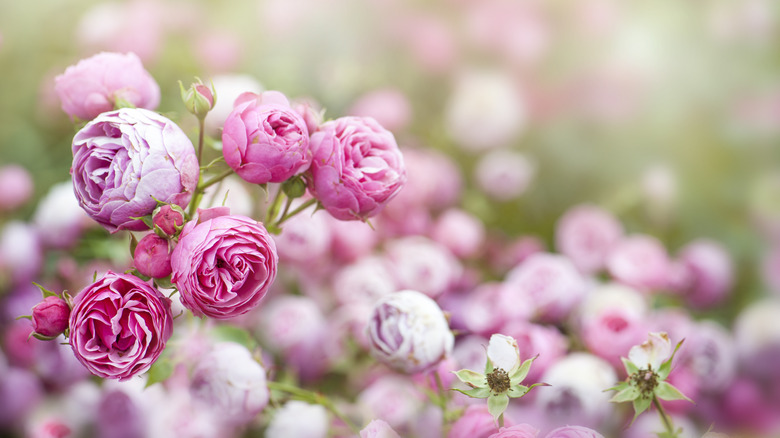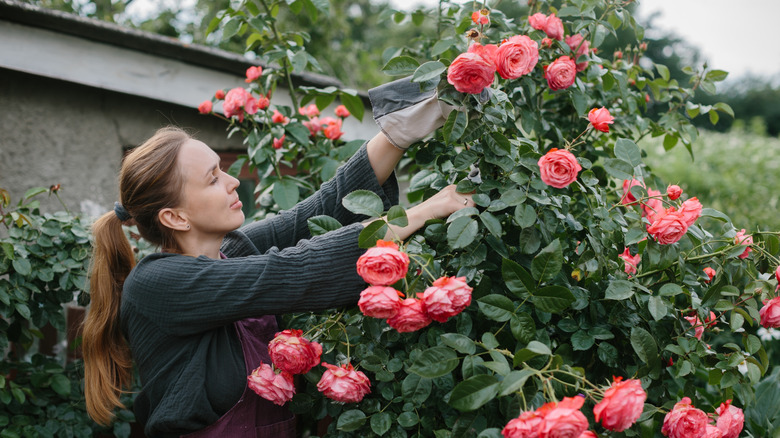The Easy Way To Keep Black Spot From Spreading From Roses To The Rest Of Your Garden
Roses are often the crown jewel of a flower garden, and for good reason. They come in a variety of beautiful colors, shapes, and sizes to suit any gardener's tastes, and they fill the air with a wonderful fragrance wherever they are planted. But as stunning as they are, roses can also be high-maintenance. One of the most common challenges gardeners face is black spot — a fungal disease that can leave even experienced rose gardeners feeling defeated, damaging the flowers they've nurtured and spreading quickly to nearby plants. But there may be a simple solution to keep this problem from taking over your beautiful flower bed: placing a layer of cardboard or newspaper around the base of your bushes will block the spores from reaching healthy leaves and help your roses stay vibrant and disease-free.
Left unchecked, black spot can stunt growth, cause premature leaf drop, and make roses more vulnerable to additional garden problems. Understanding what black spot on roses looks like can help you catch this disease early and prevent it from spreading. You'll often notice circular black or dark brown spots on the upper surfaces of leaves, sometimes surrounded by yellowing. Infected leaves may fall off prematurely, and new growth can be slowed if the disease is severe. Using a simple layer of cardboard or newspaper, topped with a layer of mulch, around your roses can protect the plants and keep black spot from spreading — an easy step that lays the groundwork for a healthier garden. To strengthen your garden's defenses even further, you should consider incorporating disease-resistant rose varieties that can serve as ground cover as well. Combined, these strategies create a protective barrier for your roses, helping you maintain a healthy flower garden.
Simple black spot prevention method for healthy roses
Using the cardboard/newspaper barrier method is easier than you might think. Begin by removing any fallen leaves around your rose bushes — these are the primary carriers of black spot spores. Lay down cardboard or several layers of newspaper (be sure to avoid waxed cardboard) around the base of each bush, extending past the drip line to cover the soil thoroughly. Next, add a layer of organic mulch, such as wood chips or compost, to hold the cardboard in place, improve soil health, and maintain proper moisture levels. Make sure to check periodically for debris or leaves that land on top and remove them, keeping the barrier effective throughout the season.
Beyond black spot prevention, there are additional steps to ensure your roses thrive. Regular pruning improves airflow, reducing the damp conditions that fungi love. Keeping an eye out for early signs of other diseases, like rose rosette disease, a lethal disease that could be lurking in your rose garden, will help you identify and remove infected plants before the disease spreads. By combining careful mulching, strategic planting, and attentive maintenance, your roses can remain strong, healthy, and blooming beautifully, making your flower garden a vibrant, worry-free centerpiece all season long.

